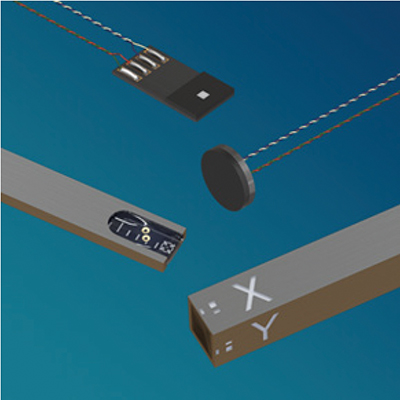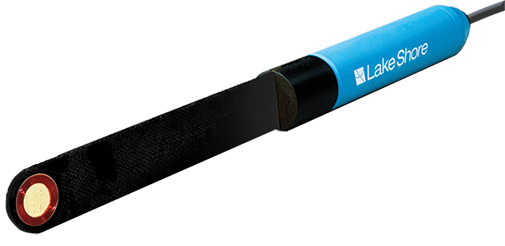What’s the right tool for magnetic measurements?
Magnetic fields can be measured in many ways. The determining factor is the physical property that is to be measured. It is possible to measure the magnetic field strength at a certain position or the magnetic flux through a defined surface.
Teslameter
The magnetic field strength is measured in Tesla or Gauss, hence the name of the corresponding measurement system: Teslameter.
A measurement head is needed for the measurement. Two different geometries are available: sensors and probes (measurement heads with handle).
Both can:
- measure field strengths at a given point in space
- measure the magnetic field in small areas or gaps
- perform rapid, individual static measurements
- measure AC and DC fields
- create high-resolution magnetic field maps
The basis for all measurements is the Hall effect. The Hall effect is the production of a potential difference in a current-carrying conductor in the presence of a magnetic field. The potential difference is perpendicular to the magnetic field and, for a set current I, proportional to the magnetic field.
Due to this strong directional dependence, it is of utmost importance to choose the right sensor or probe. There are three different types:
- Transversal sensors and probes are ideal for measurements of fields between narrow slits, where north and south pole are opposite each other and create a homogeneous field, and on surfaces which are passed by magnets
- Axial sensors and probes for measurements inside cylindrical coils or magnetizers
- 3-axis sensors and probes. They combine the properties of the other two types while being larger. The teslameter can calculate the entire field and the individual x-, y- and z-components
To ensure the accuracy of the measurements, all sensors should be as small as possible.
Once the most suitable sensor is found, measurement is the next step. There are two different measurement modes: Direct current measurements which are best suited for static fields or fields that change very slowly. Alternating current measurements for periodically changing magnetic fields with the option to adjust the measuring head frequency accordingly.
The measurement range also needs to be adjusted. State-of-the-art measurement systems automatically select the correct settings. Sometimes, the measurement range must be fixed. As a rule, the interval should be chosen so that the measured value reaches at least 10% of the measurement range limit.
Fluxmeter
With a combination of fluxmeter and Helmholtz coil, additional parameters like magnetic flux, flux density, magnetic field strength, dipole movements and magnetic potential can be measured.
Fluxmeters measure magnetically induced voltage in coils. Compared to teslameters, fluxmeters are more complicated to operate due to the large number of measurable variables.
Typical applications are:
- definition of the total magnetization of a magnet
- measurement of the magnetic flux within fixed objects like coil cores
- dipole measurements of permanent magnets with help of a Helmholtz coil
- construction of proprietary coils and their characterization
- measurement of high-frequency fields
A fluxmeter uses a conductor loop or coil to identify the perpendicular magnetic flux. The measurement thus depends on the size of the coil. To measure magnetic flux, flux must be generated by movement of the individual components.
With a search coil, measurements can be performed that are like those of a teslameter. However, these measurements have certain limits as the magnetic field measurements can only be done perpendicular to the search coil and are averaged by the diameter of the coil. In addition, a magnetic flux must be generated by placing the search coil at the point that is to be measured and then jerking it away. It is easier to do measurements in alternating fields. Generally, these measurements should be done with a teslameter. A search coil should only be used if a fluxmeter is at hand and there is no plan for purchasing a second device.
The fluxmeter proves itself in combination with the Helmholtz coil. Combined, the system can not only measure the magnetization of a test object but also characteristics like permeability and magnetic conductance.
Choosing the right measurement system thus depends on which values are to be determined and the geometry of the experimental setup.
We look forward to helping you choosing the right tool.
Contact
| +49 6157 80710-554 | |
| +49 6157 807109554 | |
| Write e-mail |





